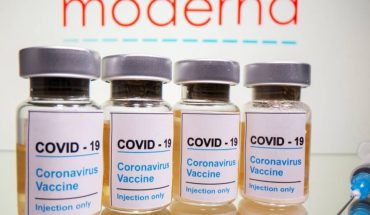The ICOVID Chile team, an initiative led by the University of Chile, the Pontifical Catholic University of Chile and the University of Concepción, presented its 64th report with analysis and data of the proposed dimensions to monitor the pandemic in the country, with information obtained until Sunday, November 21, 2021, provided through an agreement with the Ministry of Health and the Ministry of Science, Technology, Knowledge and Innovation.
According to the new report, at the national level there is a reduction of approximately 1% in the number of new daily infections compared to the previous week. Thus, the load indicator reached 12.0 new cases per 100,000 inhabitants approximately, still remaining in critical condition.
In fact, as Guillermo Marshall, pro-rector of the Pontifical Catholic University of Chile, emphasizes, “this week has seen a brake on the growth of the pandemic at the national level, which is good news. Also during the week, a significant contraction in the dynamics of contagion in the Metropolitan Region began.”
At the local level, Aysén (44.0), Atacama (34.1), Los Lagos (22.8) and Biobío (20.42) are the regions with the highest numbers, and Magallanes (6.9), O’Higgins (7.0), Arica and Parinacota (9.14), and Metropolitana (9.3) are the regions with numbers of less than ten new daily cases per 100 thousand inhabitants.
On the other hand, in terms of transmission, the effective reproduction number (R), which represents the average number of people who infect each case, has fallen by 10% compared to the previous week at the national level, standing around the value of 1.0, which represents a stability in new cases. At the local level, the only region with an R significantly lower than 1.0 is the Metropolitan, while the regions that have an R value significantly higher than 1.0 are Atacama (1.43), Coquimbo (1.09), Maule (1.12), Ñuble (1.17), Biobío (1.17), La Araucanía (1.14) and Los Lagos (1.28).
Mauricio Lima, researcher in population dynamics and academic at the Faculty of Biological Sciences of the Pontifical Catholic University of Chile, emphasized that “after two months of a new expansion of the epidemic, its growth seems to begin to stop with load levels 50% lower than those registered during the wave experienced last semester. Having been able to reduce the burden of infection to very low levels during the past winter weekend, vaccination and cultural changes already widely adopted by the population seem to have resulted in an effective combination to mitigate this latest wave.”
In terms of testing, the new report indicates that the total number of PCR tests reported per thousand inhabitants per week nationwide decreases to 21.8 compared to 22.8 the previous week. “We observed that the testing capacity has remained between 19-22 PCR tests since the last week of October, reaching levels comparable to the maximum reached in the pandemic in the months of March and June 2021. This increase in the number of PCR tests carried out nationwide also coincides with a sustained increase in the number of cases we have observed since the beginning of September 2021,” they explain in the report.
At the local level, the regions with the highest level of testing per week per inhabitant are Aysén (44.7), Atacama (36.8), Magallanes (33.6), Los Lagos (32.7), Antofagasta (29.0), and Arica and Parinacota (31.4). On the other hand, the regions with the lowest level of testing are O’Higgins (14.6), La Araucanía (17.4), Valparaíso (18.3) and Metropolitana (17.5).
Meanwhile, the test positivity, which indicates the fraction of reported PCR tests that are positive, reaches an average of 3.4% in the last week observed, remaining in yellow color of the ICOVID traffic light. It should be noted that “this indicator shows a progressive deterioration since the beginning of September when it remained around 1% (the lowest level since the beginning of the pandemic). This level of positivity has not been observed since July,” the report says.
Likewise, the regions with the highest positivity are Aysén (6.7% positive tests), Los Lagos (4.8%), Atacama (4.7%), Valparaíso (4.6%), and Biobío (4.4%).
On traceability, the new ICOVID report indicates that the proportion of early consultations, an indicator that estimates the search for attention within 48 hours from the appearance of symptoms of covid-19, is 58% nationwide. Put another way, four out of every dieConsultations of confirmed cases were made after two days since symptoms began.
Meanwhile, on the time of examination and laboratory at the national level, the proportion of pcr test results and antigens reported to the health authority within 24 hours of notification as a suspected case in Epivigila, has shown a sustained decrease since the beginning of September (when it reached a peak of 84% coinciding with weeks of decrease in the burden of infected people). From there it has been falling steadily, showing in the reported week 72.8% of compliance.
Finally, on the early confirmation of cases at the national level, an indicator that shows a proportion of notifications that are made within 72 hours of sampling, reveals a sustained improvement since the beginning of March of this year, when it only reached 30% performance. In the week reported in this report, this indicator borders on 56.7%. Undoubtedly, the decrease in laboratory times with the incorporation of antigen tests and rapid PCR, has helped in the acceleration of this chain of processes.
In the dimension of hospital capacity, the new report indicates that the average occupancy of ICU beds nationwide for any pathology, reached 89.8% in the week observed, remaining in red color of the ICOVID traffic light since mid-October. At the local level, meanwhile, the regions of Valparaíso (95.8%), Metropolitan (94.0%), and Antofagasta (91.8%) remain in the red zone, while the occupation of ICU beds in Tarapacá (90.8%), Biobío (88.9%), and Coquimbo (88.9%) increases. The largest increase was observed in Los Lagos which rose from yellow (76.5%) to red (88.8%).
In this line, Catterina Ferreccio, epidemiologist and academic of the Department of Public Health of the Pontifical Catholic University of Chile, highlights that “this week there is good news and bad news. The good news is that the growth of the pandemic has slowed, there is a decrease in hospitalizations and vaccination coverage for those under 18 years of age has increased. The bad news is that we maintain a high burden of new daily cases and that we have not managed to substantially improve the early identification of infectious cases, a key aspect in the control of transmission.”
For its part, the proportion of ICU beds with patients hospitalized for covid-19 remains relatively low nationwide, reaching 29.9% in the last week observed. It should be noted that this figure doubles the rate at the beginning of October when it was around 15%. The region with the highest hospital demand associated with critical COVID-19 patients this week was Aysén with 41.4%, but with a low occupancy of the total ICU beds.
Meanwhile, the weekly variation rate in covid-19 hospitalizations, an indicator that is only available nationwide and measures the relative change in hospital demand for total covid-19 patients, in beds of all kinds: basic, medium, ICU, ICU, ICU, shows in this last week a systematic decrease in total hospitalizations for covid-19, from a peak of 15% increase on November 14 to a 6% drop on the 23rd of the same month.
Likewise, the indicator of average daily hospitalizations of COVID-19 patients in ICU beds disaggregated according to age increased nationally in all age groups, highlighting the increase in people aged 50 to 69 years for being the ones with the highest increase in absolute and relative terms. In this group, in the first week of October there were 167 hospitalizations for covid-19 rising to 327 (95.8%) as of November 23. On the same dates, those under 50 rose from 101 to 144 (42.6%) hospitalizations, while those over 70 rose from 105 to 177 (68.6%). However, when considering the weekly averages of the last week, there is a clear fall in COVID-19 hospitalizations in both the minor and adult groups, with a less marked fall in the group of 50 to 69 years.
Likewise, the weekly rate of hospitalizations for covid-19 has remained stable in the last week around 3.8 cases per 100 thousand inhabitants, this according to information from the Clinical Bed Management Unit (UGCC) of the Ministry of Health.
On the other hand, with respect to the coverage of complete inoculation with two-dose vaccines is 91.3%, 93.3%, 83.3%, and 50.6% for people over 70 years, between 50 and 69 years, between 18 and 49 years, and under 18 years, respectively according to the most recent date available (November 23). Only the group of children under 18 years of age showed a significant increase.
Also, it should be noted that the coverage with a complete vaccination schedule on the total population reaches 81%, one of the highest in the world. However, there are three regions below the national average: Arica and Parinacota (78.5%), Tarapacá (76.0%) and the Metropolitan (76.3%). While the regions with the highest coverage are Ñuble (89.1%), O’Higgins (87.8%), Magallanes (87.5%), Maule (86.4%) and Aysén (86.3%).
Finally, the indicator of mortality from covid-19 according to age groups, with data reported by the Department of Statistics and Health Information, DEIS, (laboratory-confirmed and probable) shows that those over 70 years of age who died from covid-19 from 44 people per week at the end of October reached 94 weekly deaths as of November 21. The other two minor groups showed no increase in mortality, with 24 and 8 weekly cases in the groups of 50 to 69 and under 50 years, respectively.
Learn more about data and the full report here.
ICOVID Report: Pandemic Growth Halted at National Level, Although Nine Regions of the Country Continue to Grow New Cases
November 27, 2021 |





